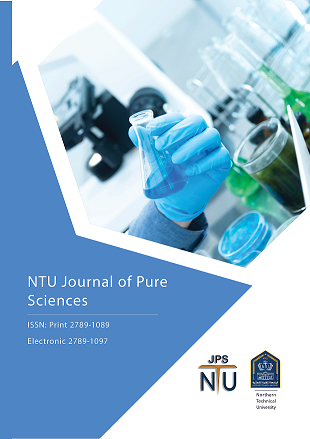Effect of two nanoparticles and bacteria spores on some biological aspects of waxworm Galleria mellonella (Lepidoptera;Pyralidae)
DOI:
https://doi.org/10.56286/ntujps.v1i3.270Keywords:
Nanoparticles, ZiO, TiO2, Galleria mellonella, Bacillus thuringienesesAbstract
The aim of this study is to control the major Waxworm Galleria mellonella, pests that, cause damage to honeybee colonies due to feeding their larvae on wax combs using safe alternatives such as nanomaterials and biological control using spores of Bacillus thuringiensis bacteria and the use of concentrations, , and cells/ml of D.W on the egg stage, and the efficiency of zinc oxide nanoparticles and titanium dioxide in controlling the insect was tested using concentrations (5000,1000,500,100) ppm ,The practical study was conducted in the insect lab /Department of Biology/College of Education for Pure Sciences at Mosul University. The nanomaterials and bacterial spores used showed a significant effect in the incubation period, as the longest period was 17.667 days in zinc oxide at a concentration of 100 ppm, and the percentage of hatching was as low as 26,000% in bacterial spores at a concentration cells/ml and duration The larval and pupal stages and the mortality rate in them, where the longest period in the larval stage was 39.333 days in TiO2treatment at concentration 5000ppm, and the highest percentage of mortality was 82.1% in bacterial spores at concentration cells/ml in addition to the number of emerging insects and sexual ratio, as significant differences were shown between the treatments.
Downloads
Downloads
Published
Issue
Section
License
This work is licensed under a Creative Commons Attribution 4.0 International License (CC BY 4.0), which permits unrestricted use, distribution, and reproduction in any medium, provided the original work is properly cited.





